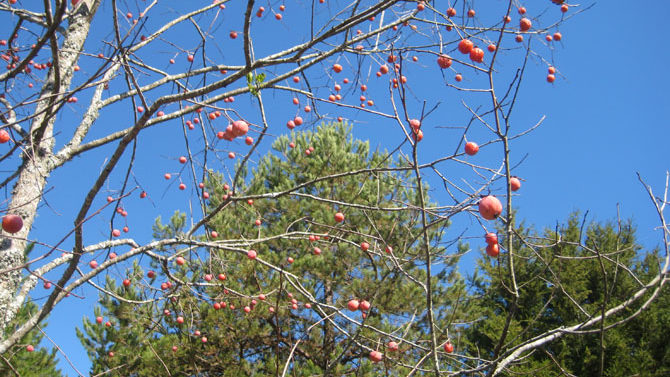In 1949, Aldo Leopold wrote in A Sand County Almanac: “…over-abundant deer, when deprived of their natural enemies, have made it impossible for deer food plants to survive or reproduce… The composition of the flora, from wild flowers to forest trees, is gradually impoverished, and the deer in turn are dwarfed by malnutrition.” His words make sense to me as I look around my own neighborhood near Tallassee Road at the edge of Clarke County.
Hungry deer roam my yard, my neighbors’ lots and the woods and fields nearby. The young dogwoods, redbuds and maples I have planted are nibbled to toothpicks in a few days. Sometimes, a tree tries to come back, sprouting new leaves from its remnant. Then chomp! Deer eat it back to the ground again. Eventually, it dies.
A few years ago, I received a “worm tree,” a Catalpa—the host tree for Catalpa Sphinx Moth larvae—from the ACC Community Tree Council. It thrives at the end of my driveway and seems to be one of the few native trees that deer ignore. This made me curious. What “deer food plants” are not surviving in my area?
I searched my neighborhood for young, healthy, native understory trees. But I couldn’t find many. Paulownia, chinaberry and other exotics are doing fine and spreading rapidly. Native tulip trees, pines, persimmons and sweet gums are holding their own and reproducing. It’s the lack of young redbuds and dogwoods that concerns me. After all, many birds and other wildlife need “layers” in the woodlands and not just tall canopy trees. Shrubs and understory trees provide crucial protection and food for many wildlife species.
It turns out that only mature dogwoods and redbuds are found around here. Yet, these older trees aren’t successfully reproducing because of the large population of herbivores overbrowsing all of the young seedlings to death.
A neighbor discovered that her native fringe trees attracted hungry deer, too. Her husband fenced them for protection. Now these beautiful, understory trees are thriving. When I caged the small dogwoods that I planted, they began thriving, too. At last, one is more than six feet tall.
But I hesitate to remove the fencing, even though the wire is not attractive. Here’s why: There’s more than one way deer can kill a healthy tree. A few years ago, a buck rubbed his antlers on one of our favorite, large dogwoods. His intense rubbing—to scrape the velvet from his antlers—removed so much bark that he “girdled” the tree. Girdling kills a tree when enough living bark is removed to prevent necessary nutrients from flowing within the tree. It wasn’t long until our beloved dogwood died.
In Bringing Nature Home, Doug Tallamy encourages everyone to protect young native trees with fencing until they are tall enough to survive intense grazing. This simple act gives many of the beautiful natives, in our woods and around our homes, the chance to survive. With nature so out of balance, we need all the ways we can find to nurture our native trees.
Like what you just read? Support Flagpole by making a donation today. Every dollar you give helps fund our ongoing mission to provide Athens with quality, independent journalism.









